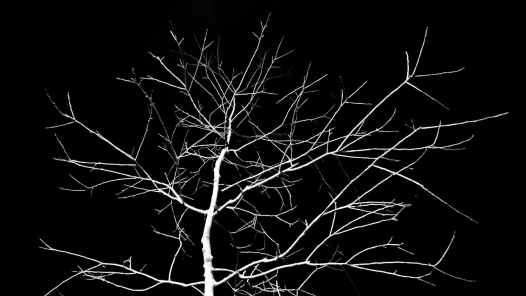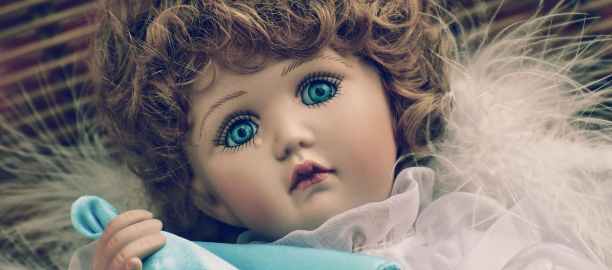Why are dolls used in horror movies? What makes a Gothic novel? And to what extent is 9/11 responsible for the Twilight franchise’s popularity?
With Halloween just around the corner, I thought it was time to delve into the sordid history of Gothic novels (which, incidentally, has nothing to do with the lip piercings and heavy guyliner of goth subculture). It’s a cyclical genre, seeming to re-emerge in popularity during times of political, socio-economic or religious crisis.
Bram Stoker’s Dracula, for instance, can be seen as a response to anxieties around Eastern European immigration in the 19th century. Dracula, a vampire from Transylvania, is ostensibly human. His ability to assimilate into human society, while retaining his monstrous nature, poses the idea that ‘the other’ could be lurking within us, putting us at risk of moral and cultural degeneration. The Gothic therefore provides a way to navigate cultural stress through literature. Could this explain the popularity of another novel with Gothic influences? A novel with vampires and forbidden desire. A really terrible, awful novel – one which produced sparkly Robert Pattinson and thus triggered an entire generation of swooning fangirls and embarrassing mums. The-Book-That-Shall-Not-Be-Named. My English teacher’s theory is that the rise of global terrorism in the 1990s and early 2000s, a cultural crisis related to politics and religion, provides the perfect catalyst for a revival of Gothic horror. Who is with us, and who is against us? Who is a vampire and who is human? Who is a terrorist and who is innocent? The monster could be anyone.

(Here lies an obligatory mention of historical context for those interested, otherwise, do skip!) Long story short, there was Romantic Gothic in the 18th century, packed with ghouls, ancient prophecies and love affairs, starting with The Castle of Otranto in 1764. The genre became popular in the United States with Southern Gothic in the early 19th century, using the grotesque and the uncanny to explore deeply rooted anxieties of race and class. The sensation novel of the 1870s and 80s, rife with tales of blackmail, murder and insanity, threatened social conformity and Christian values in Victorian England; there was also a huge surge in popularity at the end of the century, known as the fin de siècle period. This was largely caused by uncertainties of the end of the century, including an aging queen coming to the end of her reign, as well as fears that society’s rapid progression must inevitably decline and degenerate (see the section on ‘degeneration’).
Characteristics of the Gothic genre include:
- The Supernatural: The inclusion of the paranormal in Gothic literature blurs the boundaries between what is real and not real. (Think of Dracula‘s vampires, Cathy’s ghost in Wuthering Heights, Dorian Gray’s curse, miraculously hearing Rochester’s voice in Jane Eyre, the unnatural creation of life in Frankenstein, Toni Morrison’s eponymous Beloved, the list goes on…)
- The Uncanny: ‘The uncanny’ is all about blurring boundaries between what is and isn’t human. If you
want more on this specifically, you can look into the concept of the ‘uncanny valley’. Basically, it explores why humans are disturbed or repulsed by objects which resemble, but aren’t exactly like, human beings. Weird humanoid robots and dolls in horror movies, they’re eerie because although they have strangely familiar human characteristics, we instinctively know that something’s not quite right. Gothic fiction loves this – it’s just wonderfully creepy – and heaps of books include monsters that can pass as people, or sub-human characters (classic examples being Frankenstein’s monster, Dracula or Robert Louis Stevenson’s Hyde).

- Sexual desire: This isn’t your ordinary cutesy courtship and marriage storyline. Gothic novels make explicit what is otherwise implicit, challenging society’s moral expectations. This means that sexual desire depicted in Gothic novels is often transgressive of social norms (see the homosexual undertones in The Picture of Dorian Gray, the link between vampires and sex in Dracula, or the openly sexual female characters in Angela Carter’s dark modern fairytales).
- Degeneration: While this used to be symbolised by the deteriorating castle, or the crumbling abbey, Victorian Gothic novels transformed this motif into an exploration of the decaying body (seen through Mr Hyde), the degeneration of the mind (Bertha Mason in Jane Eyre) and the degradation of the soul (The Picture of Dorian Gray).
- The Sublime: In Romanticism, ‘the sublime’ generally refers to awe produced by the beauty and magnificence of nature. In Gothic fiction, however, the Sublime is more an appreciation for the terrifying. Grotesque imagery and descriptions which evoke fear are intended to be simultaneously horrifying and captivating.
To sum it up, Gothic horror is all about moral ambiguity and monstrosity, breaking taboos and blurring boundaries, and the fascinating appeal of terror. At the moment, I’m writing my English coursework on the depiction of ‘the other’ in The Picture of Dorian Gray and Jane Eyre. But that’s a subject for another blog post.
Extra reading for keen beans
- Getting through any of the novels I’ve mentioned is a good starting point: Frankenstein (1818), Jane Eyre (1847), Wuthering Heights (1847), Jekyll and Hyde (1886), The Picture of Dorian Gray (1890), Dracula (1897), Rebecca (1838), The Bloody Chamber and other stories (1979) and Beloved (1987) (NB: Please don’t read Twilight as a result of this post, I’d never forgive myself)
- The Connell Short Guide to The Gothic is a great simple introduction if you want more on the history of the Gothic genre.
- What’s the link between vampires and sex, anyway? If you’re still unsure about how Dracula relates to ‘fears of immigration, sexual promiscuity and moral degeneration’, here’s a nice little article by Greg Buzwell: https://www.bl.uk/romantics-and-victorians/articles/dracula
- Read more about Victorian Gothic fiction in the fin de siècle: https://www.bl.uk/romantics-and-victorians/articles/gothic-fiction-in-the-victorian-fin-de-siecle
- On ‘the Sublime’: https://the-artifice.com/the-sublimes-effects-in-gothic-fiction/


Brilliant!!
LikeLike
Thank you so much!
LikeLike